MASS Meeting Notes for June 14, 2019
Dean, Phil, Keith, Phil and I were in attendance for our 61st meeting. I started the event with a series of questions. The first question was who knew what this picture was?
Only a couple of people knew that it was the recent picture of the black hole at the center of the M87 galaxy 53.5 million light years away. It weighs 6.5 billion times the mass of the Sun and its event horizon is calculated to be 38 billion km in diameter or about 4 times Neptune’s orbit. On April 2017, 8 radio telescopes in Hawaii, Arizona, Mexico, Spain, Chile and the South Pole (collectively known as the EHT or Event Horizon Telescope) used good weather to simultaneous observe the galaxy. They collected 4 petabytes (peta is 10^15 bytes or a million billion bytes) on hard drives that were then mailed to data processing facilities around the world. Then using an algorithm developed by Katie Bouman, an MIT student, the data were processed into the picture you see. The EHT has an incredible resolution of 20 micro arcseconds which is equivalent to reading a newspaper from 4000 miles (6500 km) away. Here is a video that does a great job explaining what the picture means even though it was done before the picture was released and mentions the Milky Way’s central black hole rather than the one in M87. There will be more about the black holes later in the post.
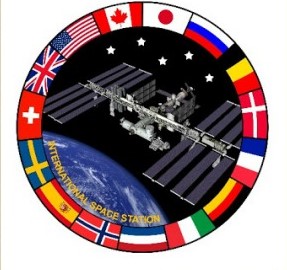
The next set of questions were our “Fun with Flags” segment, where we channeled the TV show the “Big Bang”. I had the group guess the 15 countries that support the ISS by showing their flags. The only flag that drew a blank was the Netherlands. You never appreciate the lack of diversity with flags until you look at this set of them. Red, white and blue stripes were in at least 3 of them. Clockwise starting in the 1 o’clock position is Japan, Russia, Belgium, Denmark, France, Germany, Italy, Netherlands (note in the picture its flag is depicted upside down), Norway, Spain, Sweden, Switzerland, United Kingdom, United States and Canada.
We did a quick announcement that Dean’s podcast on Casual Space with Beth will be dropping June 20th. Be sure to check it out.
Our next topic was the new planes that NASA is working on. Remember that the first “A” in NASA is aeronautics. There is the X57, an all electric plane that runs on batteries and the X59, a “low boom” supersonic demonstrator set to debut in 2021. The X59 is to overfly the US and get feedback from the public that sonic booms can be modified so that they aren’t the nuisance that they were when the Concorde was banned from all but coastal airports. Another plane in the news was the enormous Stratolaunch which had its first flight for 2.5 hours over the Mojave desert in April. It reached a speed of 189 mph and an altitude of 17,000 ft. First announced in 2011, the plane has a wingspan of 385 ft (compared to the Spruce Goose 320 ft, Airbus a380 262 ft, Boeing 747 212 ft) and can lift and launch rockets of up to 500,000 lbs. Unfortunately, it might be the last flight. Stratolaunch declared bankruptcy one month later. So like the Spruce Goose it might fly only once. The plane was financed by Paul Allen who died recently. Richard Branson has his own rocket launching plane, a modified 747 called Cosmic Girl, which will probably be ready a year before Stratolaunch and will steal the small air launch market. At one time it was considered that even the Falcon 9 rocket from SpaceX might have an air launch configuration but the ability to recover the first stage seems to have negated the advantage of air launching. Air launch has the advantage of launching from anywhere without having to schedule a launch window from a ground pad. But the economics of carrying a rocket to a 30,000 ft and dropping it, seems to have evaporated. Only the Pegasus family of rockets are capable of air launch and the payload to orbit is pretty small.
I recently watched a debate between Alan Stern, who led the New Horizons mission that flew past Pluto, and Ron Ekers, past president of the IAU. (International Astronomical Union) about the definition of “planet”. The IAU definition has 3 criteria: 1) orbits the sun; 2) large enough for a round shape, and 3) massive enough to clear its orbit. My problem with “clears its orbit” is Earth would not qualify if it was 100 astronomical units ( 1 AU is the distance of the Earth to the sun) from sun. To me it shouldn’t matter where the planet is located. Close to the sun or far away (1 AU or 100 AU). The IAU definition also doesn’t apply to rouge, planets drifting through space, or exoplanets, planets orbiting other stars, because the IAU says the planet must orbit the Sun. In Aug 2006 at Prague, only 424 persons voted of the 9000 IAU members for this definition. They demoted Pluto to dwarf planet status because they were concerned that people were going to have to memorize too many planet names. When first discovered Eris (2003 UB313) was thought to be larger than Pluto and many other KBOs (Kuiper Belt Objects) were estimated to be large enough for planet status. The IAU wanted to know how to select a name for Eris and a planet name would have a different selection than a smaller body. The IAU was formed by the Allies in 1919 after WWI to name objects and send telegrams. It also helped define the star constellation boundaries. I think when an organization is defining a class or objects based on their difficulty in naming them, things have gotten a skewed. Kirby Runyon of John Hopkins and others came up with a geophysical definition for planet that has only has 2 criteria: 1) small enough that fusion hasn’t occurred, and 2) large enough to be spherical. Planetary scientists favor this definition and ignore the one from the IAU. They use the sub classes like dwarf, satellite, gas giant, ice giant, rouge, exo, to further qualify various planets. In each of the sub classes the object also qualifies as a planet, ie. a dwarf planet is a planet. Just like a dwarf galaxy is a galaxy and a dwarf star is a star. The IAU specifically stated that a dwarf planet is not a planet in their definition. The new geophysical definition has about 110 objects in solar system that qualify as planets. Our Moon, larger moons of Jupiter like Io, Europa, Ganymede and Callisto and Saturn (Titan and Enceladus) would qualify and be labeled satellite planets. That originally gave me some heartburn. But with the use of sub classes things get more manageable. We don’t limit the number of galaxies because of naming issues or the naming of rivers or mountains because we have too many of them. All you have to do is just remember a few examples of each class or area. Geophysicists or planetary scientists don’t really consider themselves astronomers and don’t join the IAU, so maybe an astronomer organization shouldn’t be doing the definition for planet. I understand the situation better now that I know planetary scientists don’t really care about the IAU definition. And I think the IAU is a little out of touch with the main-stream thoughts on the matter. The transition from small bodies like asteroids which are jagged small bodies, to larger ones like planets which are round, to the biggest ones like stars which have nuclear fusion occurring in their cores is a sensible logical progression. Pluto is a dwarf planet in the geophysical definition but it is also a planet! Pluto has mountains, cryo-volcanoes, bubbling cells of nitrogen ice. Sounds like an interesting planet to study. The MASS members in attendance agreed and I stepped down from my soapbox to begin another topic.
NASA has a new program to land a woman and a man at the south pole of the Moon by 2024. Its call Artemis. In Greek mythology she was the twin sister of Apollo. The program was rolled out by vice president Pence and NASA’s administrator Jim Bridenstine in sort of a haphazard manner. The Presidential Budget Request (PBR) for fiscal year 2020 (which starts Oct 1, 2019) was released March 11. Then on March 26 Pence made his speech. The only return to the moon program in the PBR was one that had 2028 as the goal. NASA really had to dance to produce an amendment to the PBR that said an extra $1.6 billion would be needing in 2020 to accommodate Artemis’s 5 year plan. Congress is very skeptical about how well thought out this plan is and what its total cost will be. Estimates are $20-30 billion over the current NASA budget. People are concerned that NASA will gut all its other science initiatives to funnel money and resources to Artemis. Here is the Planetary Society opinion on the 2020 budget. Jim Bridenstine has tried to put a little meat on the plan. Here is a graphic showing 37 rocket launches over the next 10 years to accomplish Artemis by 2024 and the full lunar plan with a completed Lunar Gateway in orbit around the moon by 2028. Presidential tweets haven’t been very helpful in solidifying the plan. I’m not sure about the economic benefits of such a crash program but it sure seems to have shaken NASA into action. Which is probably a good thing. The SLS rocket group is probably feeling a lot of pressure to get more timely on their deliverables and reduce some of their costs because commercial rockets are going to be a big part of Artemis. If Musk gets his Super Heavy/Star Ship rocket or if Bezos get his New Glenn rocket flying, SLS could be obsolete or at least too expensive. NASA has already entered into a $375 million contract with Maxar, a Colorado based aerospace company, to develop the Power & Propulsion Element (PPE) for the Lunar Gateway. It will have ion propulsion three times greater than anything previously developed. Apparently Maxar will launch it into a lunar orbit and demonstrate its operation for a year, then NASA will accept delivery of it. That’s a lot of risk to Maxar and it seems like a reasonable price compared to the billions we are pumping into the SLS/Orion project. But the contract really didn’t go through competitive bidding, so it is hard to quantify. Three other companies, many of them who competed in the Lunar X Prize effort, received contracts for robotic lunar landings that will occur within 2 years. That’s a pretty quick time line. Contract awards include, $79.5 million for Astrobotic’s Peregrine lander scheduled for a June 2021 launch and July landing, $77 million for Intuitive Machine’s Nova-C lander launching in July 2021 and $97 million for Orbit Beyond’s (has Team Indus involvement) Z-01 lander launching on Sep 27, 2020. Quite hefty sums of money compared to the Lunar X Prize award of $20 million that would have been given to the first place finisher. Bezos and Blue Origin aren’t sitting on their hands, they announced the Blue Moon lunar lander that they have been working on for the last 2 years. The initial version of Blue Moon can land 3.6 metric tons (3600 kg or 8000 lbs) on the moon and a stretched version can land 6.5 mt. Blue Moon would have a 2 man crew and weight 33,000 lbs fueled and 7,000 lbs dry. It could be refueled on the moon from processed water ice which is why it uses a new BE-7 engine which burns hydrogen and oxygen. Bezos has a vision to expand the human species into space but he feels orbiting cities like those envisioned by O’Neill make more sense than inhabiting other moons or planets. He feels those other worlds don’t have the 1G gravity that our bodies need and the surface area of the planets are too finite. He says Earth would eventually have only light industry and the planets would have the heavy manufacturing (pollution generating) plants. His New Glenn rocket is being designed to 25 reuses and will land on a traveling ship at sea. It will be man-rated from the start and start flying in 2021. Harrison Schmitt, the geologist from the last Apollo mission, is on his science board. Blue Moon in operation animation.
For those of you who want to understand the details of how the NASA budget is determined, Casey Dreier of the Planetary Society has an excellent online class titled Space Advocacy 101 which explains the process and shows you how to influence the outcome. The fact that the PBR is typically 700 pages long and the Congressional response is only 20 pages, shows you that although Congress has a say in how much money is spent, the Executive Branch is the one that determines the details and priorities. The White House is NASA’s boss.
Speaking of the Lunar X Prize, it was disbanded without awarding the $20 million first place prize for landing on the moon in March of 2018 but the teams that were competing continued in their efforts. The Israeli team, SpaceIL was the first to try their landing on Apr 11, 2019 with their Beresheet vehicle. It launched on a Falcon9 on Feb 21st and was eventually captured by the moon on Apr 4th. During the landing sequence an erroneous command to shut off the main motor was sent. Dropping from a height of 4 miles, it crashed into the moon at 300 mph. The Lunar X Prize organization gave them $1 million for at least impacting the moon. Developed on a shoe-string budget of only $100 million, they have vowed to build another vehicle and try again. If successful, they will be the 4th country to land on the moon joining China, Russia and the US. The vehicle is 1.5 meters tall, 2 meters wide and weighs 1322 lbs (600 kg). Fuel is 75% of its weight. It symbolically carried an Israeli flag and a time capsule with hundreds of digital files and cultural items including a Hebrew bible on metal discs the size of a coin and a 30 million page “lunar library” also on discs. Here is a graphic showing all the lunar landings.
SpaceX has also been in the news. It recently launched RadarSat a 3 satellite system for Canada on June 12th. This was the 71st launch for Falcon9 and the 7th launch for them in 2019 (6 Falcon9’s and 1 Falcon Heavy). This compares to only 3 launches by other US providers (2 by ULA and 1 by Northrup Grumman). SpaceX plans 22 more launches this year with a Falcon Heavy, mission STP-2, scheduled for June 24 with the Planetary Society LightSail2 aboard. The RadarSat mission ended with a land landing back at the Vandenberg Air Force Base. This was the 41st time the first stage has been recovered (15 times on land and 26 times on a barge at sea) and the 20th time a first stage has been reused. SpaceX’s previous launch was 60 of their StarLink Internet communication satellites. StarLink is intended to bring high speed Internet to the entire world. The network of up to 12,000 satellites has created some controversy with astronomers concerned that with that many satellites every ground based picture will be marred by a satellite trail. I think some of the criticism is ill-informed. Low earth orbiting satellites are usually only visible near sunrise and sunset when astronomical imaging wouldn’t be occurring and concern about radio interference from satellites should be confined to the bandwidths controlled by the FCC. See the first 60 satellites trailing across the sky. Elon Musk plans to use the money he makes on StarLink to fund his future rocket and Mars colonization efforts. The prototype, called Starhopper, of his new StarShip vehicle is beginning to hop down in Boca Chico, Texas. The prototype will only have 3 of his new methane burning Raptor engines. The final version of StarShip will have 6 Raptor engines (3 optimized for vacuum use and 3 optimized for atmosphere use). The Super Heavy that launches StarShip will have 31 Raptor atmosphere engines. If you want to do a deep dive on the Raptor engine, EveryDay Astronaut has an excellent video (~ 50 minutes long) on its performance, why methane was selected and a comparison of Raptor to the BE-4 methane engine from Blue Origin and other engines of the past and present.
NASA and Bigelow Space have announced that space tourists might be flying to the ISS as early as 2020. Bigelow said they will charge $52 million for the flight and that they have contracted with SpaceX to fly as many as 4 people to the ISS on up to 4 launches of the Dragon capsule. NASA will get $35,000 per day ($1.05 million in 30 days) in food, air and ISS accommodation charges for a 30 day visit. Boeing and SpaceX have configured their commercial crew capsules for a crew of 4 but NASA might not be buying all the seats. The capsules can also carry as many as 6 or 7 if need be. NASA recently updated the commercial crew schedule after the SpaceX capsule exploded during a ground test. No one was injured in the explosion but the cause of the anomaly has not been officially announced. Some unconfirmed sources blame the ground systems rather than the capsule itself for the incident. In any event, SpaceX and Boeing are still scheduled to launch a crewed capsule to the ISS by the end of 2019. SpaceX has still to perform an in-flight abort test and Boeing has to do a pad-abort test and its uncrewed flight of the Starliner to the ISS. Sophia’s guess of Jan 4, 2020 for when a crew reaches the ISS from American soil seems amazingly accurate. Check out the MASS Prize section for details on members guesses and latest schedule dates.
Getting back to black holes, I attended a lecture by Shane Larson at COD titled “Songs from the Stellar Graveyard” on April 5th. Shane works on the LIGO project to detect gravitational waves from black hole and neutron star mergers and the future constellation of space based LISA satellites. Because LISA will have detector arms millions of times longer than LIGO, it will be able to detect mergers of super-massive black holes at the center of galaxies because those mergers will oscillate at a much longer wavelength.
I always wondered how the mass of the resultant black hole of a merger could be less than the mass of the 2 contributing ones. The mass of a black hole should be behind the event horizon and therefore never be able to escape. Shane was kind enough to respond to my email and here is his response. My takeaway is that some of the stated black hole mass is the gravity field that extends beyond the event horizon. Therefore this mass or energy would be available for conversion into the emitted gravitational wave energy from the merger. In LIGO news, the detector had been down since August for a while undergoing upgrades. As of April 1st it is back online, detections are coming very frequently with 5 more events (3 black hole mergers, 1 neutron star merger and 1 possible black hole-neutron star event). LIGO and Italy’s VIRGO detectors will soon be joined by the KAGRA detector in Japan which will help to triangulate the events in the sky.
My last topic was that the Milky Way might be twice the previous size. Scientists now estimate it to be 200,000 light years across. It had been 100,000 light years for as long as I can remember. How can we be that far off in our measurements? Scientists looked at some stars and determined that their metallicites matched Milky Way disk stars. I guess the boundary of the Milky Way’s disk is a little vague, so I’ll give them that. One interesting factoid is that 75% of the Milky Way’s stars are red dwarfs which are almost always surrounded by rocky planets but red dwarf stars are notorious for having major flares that would be harmful to life. Also none of the 9000 naked-eye stars in the night sky are red dwarfs. They are that dim.
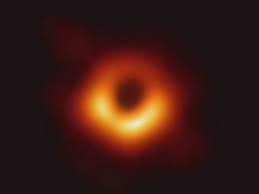
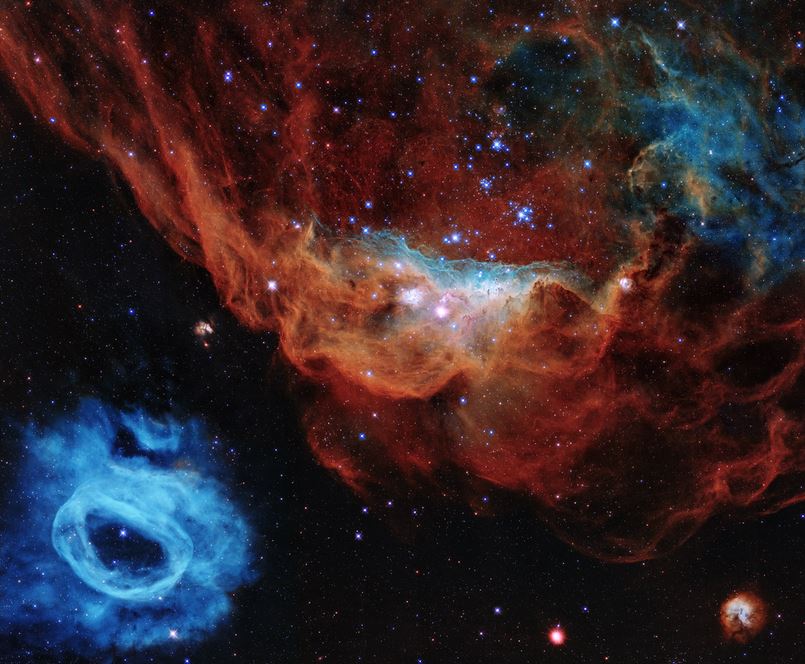
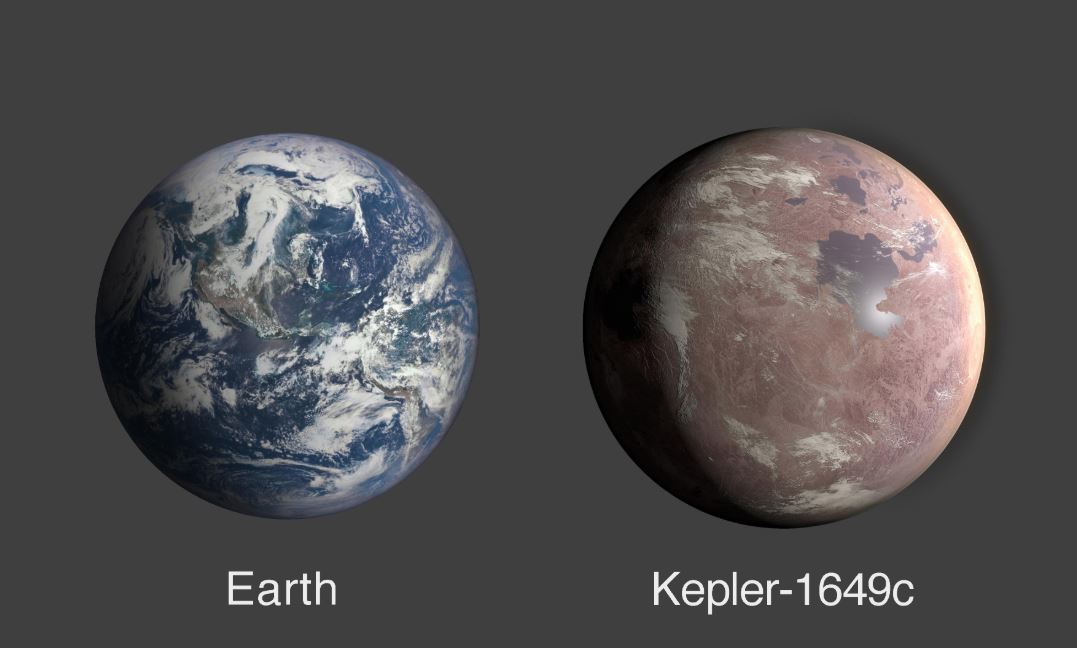
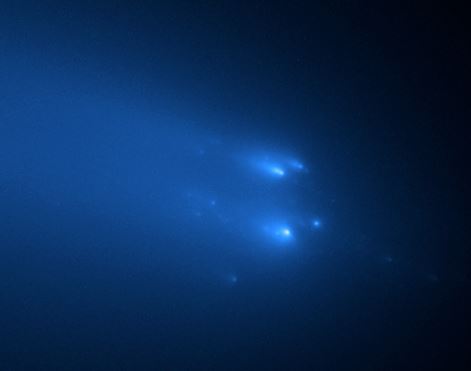
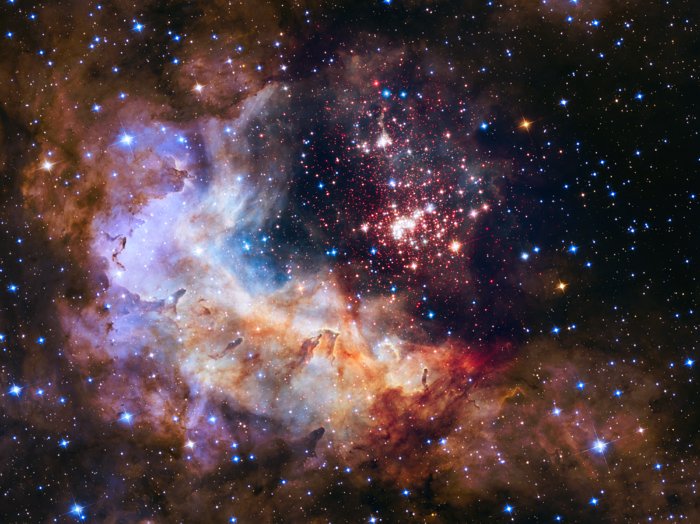

Recent Comments